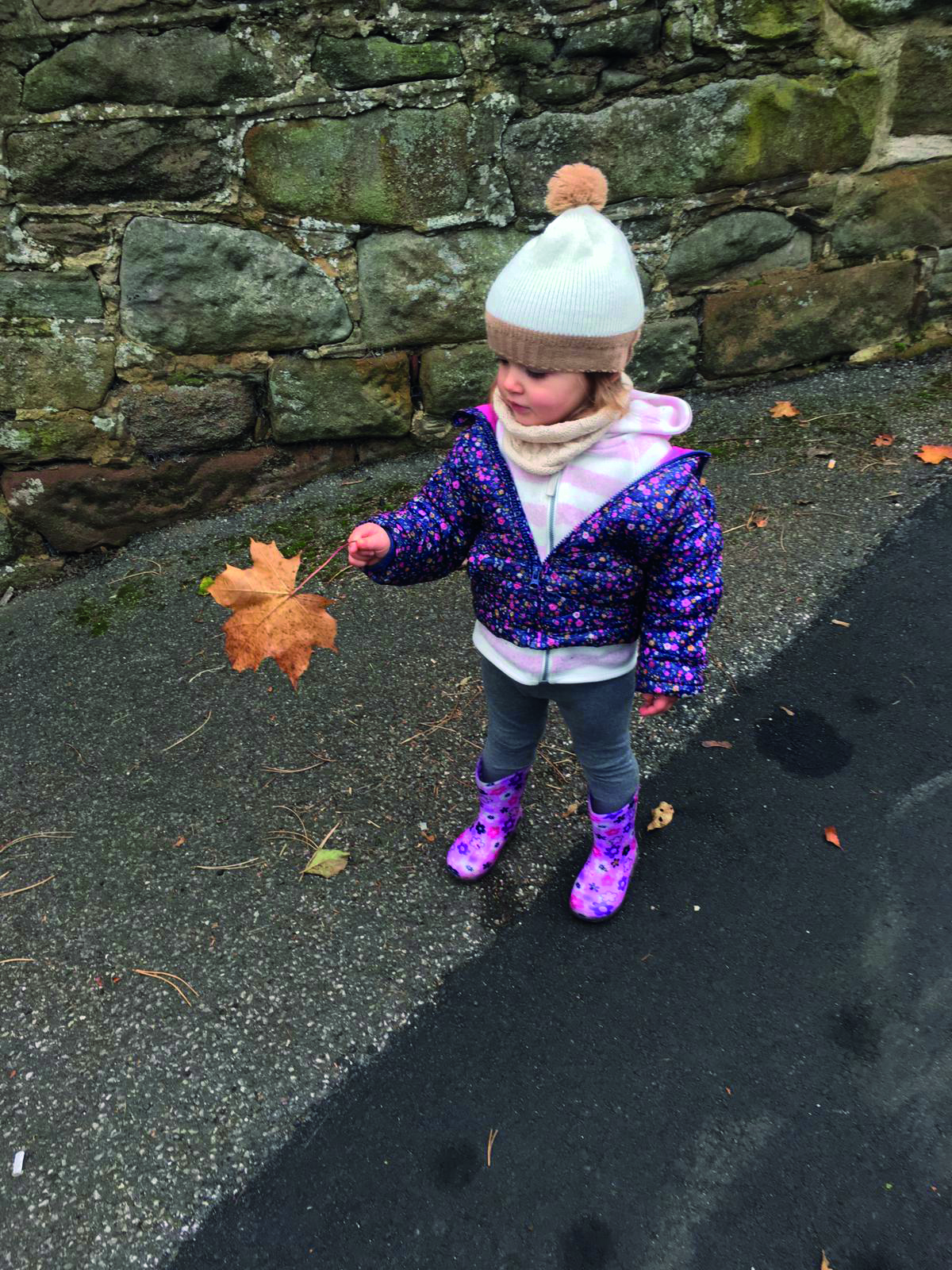
activity
IN A TIGHT SPOT

One of the chief joys of autumn is the changing colours and explorations available from falling leaves. If your outdoor space is too small to allow tree planting, or you share your space with other users, there are still plenty of ways to introduce and learn about seasonal change.
- November is the ideal time to plant all kinds of species, from flower bulbs to oak trees. If space is limited, consider planting deciduous climbing species so that in future years, children will have the pleasure of watching leaves transform over the year and then be able to collect them as they fall in autumn.
- I really love Virginia creeper and autumn hop for their bright green leaves, turning to orangey and burgundy red. They can be planted in tubs or along borders at the base of walls and buildings so take up very little space.
- Garrya elliptica is an evergreen shrub known as the silk tassel bush, and it’s great fun to have in the setting’s garden. Its huge silvery catkins appear in winter and look amazing with frost on. It also plants well against a wall and its size can be managed.
- Visits beyond the setting are valuable in themselves, but adding a seasonal twist makes them extra special. Find out if a near neighbour or a parent would give permission for your children to make four trips a year to their garden. Either way – take lots of photographs of the natural features, but also of the children in various locations such as under bushes, next to trees or fences and on top of logs. Save these images to talk about comparisons later in the year – looking not just at the natural features but also at how the children have changed.
natural learning
BETTER BE-LEAF IT
 November is the prime time for ‘leaf litter’. As leaves and other plant matter drop onto the ground over autumn, they decompose, at different rates, leaching nutrients back into the soil and keeping the soil moist. Leaf litter also provides temporary homes and delicious food for worms, centipedes, ants, beetles and woodlice. There are dozens of ways to enjoy leaves as they decompose:
November is the prime time for ‘leaf litter’. As leaves and other plant matter drop onto the ground over autumn, they decompose, at different rates, leaching nutrients back into the soil and keeping the soil moist. Leaf litter also provides temporary homes and delicious food for worms, centipedes, ants, beetles and woodlice. There are dozens of ways to enjoy leaves as they decompose:
- Create four piles of leaves in places they won’t be disturbed (or place a temporary cone barrier around them). Each week of November, deconstruct one of the piles to explore its contents, noting difference between the previous week’s pile. Take photographs to show children the decomposition in action.
- Go on bug hunts – look around the outdoors and decide on a place that would be a cosy home for minibeasts (e.g. under a tree or bush) and check it, lifting the leaf litter gently to inspect what’s underneath, then carefully replacing it. Photograph or make notes of what you found, and repeat the exercise over the month, debating whether the quantity of minibeasts is getting greater or smaller. A large number of living creatures in leaf litter is a sign of a healthy, biodiverse environment.
- Collect an armful of leaf litter and spread it out on a white sheet. Allow children to explore each item, moving them, crunching them up, folding them, drawing and measuring them: provide resources to stimulate further thinking and talking; for example, autumn coloured paint selector cards; rulers; coloured pencils, pastels and crayons; and plant ID sheets (online search: ‘Nature Detectives leaf ID’).
- Make an autumn rainbow – collect ten leaves each and line them up in a colour spectrum from darkest to lightest. Try this with largest to smallest, too, but with leaves from just one species of tree.
- Offer each child a magnifying glass, a pencil or small stick and a 1m length of string and ask them to make a circle with the string in the leaf litter. Use the pencil or sticks to gently move the leaves around and the magnifier to spot tiny creatures living in the leaves or the soil. What non-living things can they find (for example, conkers, half-nibbled nuts, worm casts)?
- Towards the end of November, can you spot four stages of leaf decomposition? A freshly fallen leaf, a dry and crumbly one, a leaf skeleton and, finally, a slimy lump of rotting leaves.
There are several important learning objectives in exploring leaf litter, not least understanding that we need to be gentle and respectful towards other living things. The multitude of tiny and delicate organisms that live in leaf litter are easily damaged so we need to teach children to step slowly and move leaves with care.









